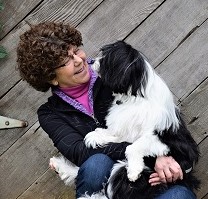Course Details
Are you ready for the next step in your journey with your dog? Are you ready to communicate in a way few have explored? You’ve heard of it! You know you want to do it! You can! And so can your dog! Teaching dogs the concept of mimicry has come to the attention of many dog trainers through the work of Claudia Fugazza and Ken Ramirez. In this course, you’ll explore the cognitive abilities of your dog and how they view your behavior in relation to their own. You’ll learn a step-by-step protocol to teach your dog to mimic your behavior and then transfer that understanding in the teaching of new, unknown behaviors. In teaching your dog to imitate and mimic the behaviors you demonstrate, you'll achieve a unique way to connect and communicate to your dog, and I can’t wait to share that with you!
This course is based on Dr. Claudia Fugazza’s “Do as I do” protocol.
Teaching Approach
Lectures will be released at the beginning of each week. Lectures include written and video descriptions of each exercise in a step-by-step approach. .
Video demonstrations of the exercises include the instructor's personal training sessions as well as actual students working the exercises. There are a variety of breeds and sizes represented in the demo vids. Demonstration video length varies between 1-2 minutes. Many of the demo videos are captioned.
Each team works at their own pace and at a level where their dog is showing understanding and confidence for the exercises for that week.
Students will be provided with both general and specific written feedback, often including timestamps for clarity. Students will be able to show their work for any previous weeks as well as the current week’s exercises for continued feedback.
While some students will complete all course material, there is no expectation that all teams will progress at the same rate. Every dog and handler team is different. The detail of the lectures and exercise videos will allow students to continue the process and complete the skills on their timeline through their library.
All exercises can be completed in a fairly small space - the size of a bedroom or other living space.
This class will have a Teacher's Assistant (TA) available in the Facebook study group to help the Bronze and Silver students! Directions for joining that Facebook group will be in the classroom after you register.
 Instructor: Julie Flanery
Instructor: Julie FlaneryJulie Flanery (she/her), CPDT-KA has been working professionally with dogs and their handlers since 1993. She focuses on the needs of the dog and helping people form a strong relationship, through clear communication, and positive reinforcement. She has placed Obedience...(Click here for full bio and to view Julie's upcoming courses)


